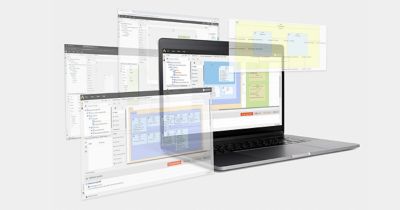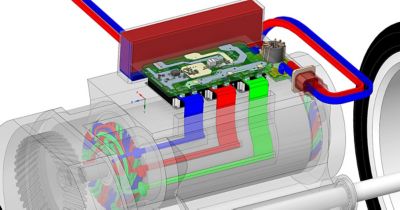-
United States -
United Kingdom -
India -
France -
Deutschland -
Italia -
日本 -
대한민국 -
中国 -
台灣
-
-
產品系列
查看所有產品Ansys致力於為當今的學生打下成功的基礎,通過向學生提供免費的模擬工程軟體。
-

In today’s rapidly moving technical landscape, it feels like if you blink, you’ll miss an important development. Across industries, we’re seeing emerging technologies such as autonomous vehicles and other products become increasingly intricate.
As a result, engineers and designers are facing new challenges, and traditional system engineering processes are proving to be no longer adequate. To add to this challenge, organizations are getting larger and more complex, resulting in the need for solutions that are scalable and accessible to all stakeholders.
For example, take engineers who are designing an autonomous rover that will explore the surface of the moon, collecting important data for researchers. The rover’s complex design not only relies on the latest technology, but also the expertise of a large team of researchers who have multidisciplinary backgrounds.

A rover on the moon.
To properly collaborate, researchers need a way to efficiently share information, ensure they are all working on the latest design iteration, and confirm that safety criteria are being met throughout all design stages — all of which becomes more challenging with increasingly elaborate designs.
What are the potential solutions to this situation? Researchers in many industries — including aerospace and defense (A&D), automotive, high-tech, and healthcare — are utilizing system architecture models (SAMs) as the answer to these modern challenges. To learn more, let’s take a closer look at why engineers across industries turn to SAMs.
Developing Increasingly Complex Technologies in Rapidly Changing Fields
To start, let’s set the stage by discussing model-based systems engineering (MBSE), which is an ever-growing methodology that utilizes digital systems and models instead of documents to design, manufacture, and maintain complex systems.
Instead of using static documents, MBSE involves creating and using digital systems and engineering domain models to facilitate the exchange of key information, feedback, and requirements.
For modern engineers, MBSE offers a structured, systemic approach to solve intricate engineering problems, thereby streamlining the development process and increasing efficiency. MBSE involves three major components:
1. An Overarching SAM
In a SAM, the system being designed is represented by a series of connected block diagrams that describe the system’s physical and functional architecture. SAMs also contain a comprehensive list of a system’s required qualities and functions.
Within MBSE, a SAM acts as the source of truth for the architecture of the system you’re studying. However, while a SAM describes this system in detail, it cannot be used on its own to see if the system meets its requirements. This is where the next part of the MBSE process comes in.
2. Engineering Simulation Software
Next, you can use engineering simulation software to determine SAM requirements. For instance, the engineers designing the autonomous rover need to ensure that all parts of their design can function at extreme temperatures. To address this, they can use engineering simulation software to run thermal and structural analyses to see if their design is up to the task.
This type of software is often computationally intensive, especially when taking a comprehensive multiphysics approach. This results in the need for a third element in MBSE.
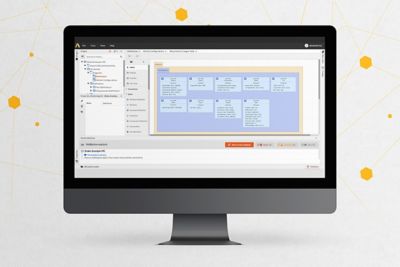
Connecting a SAM to engineering tools.
3. A Centralized Computation Center
Centralized computation centers are used to contain the SAM, perform engineering simulation software functions, and store the results of MBSE. As a result, you can view the computation center as a digital thread that combines all parts of MBSE and links them together.
Conquering Modern Engineering Challenges With the Ansys SAM
The Ansys System Architecture Modeler (SAM) capability serves as a robust tool that can solve many of the problems faced by modern engineers.
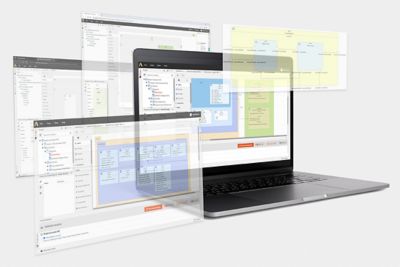
The Ansys System Architecture Modeler (SAM).
One of the hurdles that comes with having large teams is that errors can occur when people work on multiple versions of one project. To address this, the SAM tool serves as an authoritative source of truth (ASOT) for everyone working on a project. When using the SAM capability, you have a digital model with a central location that can be accessed by all the engineers on the project but cannot be modified independently. This also ensures that everyone can trace requirements throughout the product’s life cycle. As a result, teams can be confident in their data consistency, integrity, accuracy, and ability to ensure compliance.
Another issue occurs when large teams cannot collaborate on a project simultaneously. When using the web-native SAM capability, multiple users can work on the same model simultaneously. In doing so, you can see, in real time, what other users are doing. If any users make a change, it will be automatically propagated throughout the model and checked for internal consistency and accuracy by the software, maintaining the data quality. This means that your projects will be accessible and scalable throughout your organization — increasing operational efficiency.
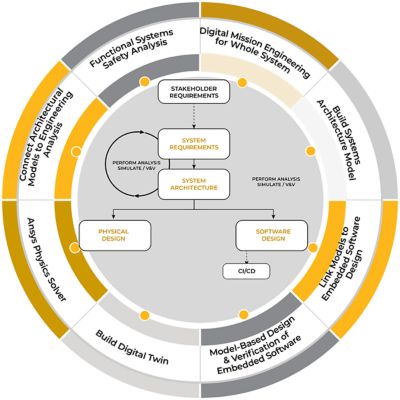
The Ansys SAM is at the center of MBSE solutions.
To achieve all of this, the SAM tool uses the systems modeling language (SysML) v2 specification, which is more powerful and easier to learn and implement than SysML v1. Using SysML v2, the SAM capability manages complexity by precisely specifying (or linking to) all relevant product details using this commonly understood language.

The SysML modeling language.
Discover Your Next Steps
Whether you’re struggling with increasingly complex designs, implementing a digital transformation initiative at your organization, growing a large multidisciplinary team, or looking to streamline your development process to better avoid errors and increase efficiency, the SAM capability and Ansys’ MBSE solutions are here to help.
The Advantage Blog
The Ansys Advantage blog, featuring contributions from Ansys and other technology experts, keeps you updated on how Ansys simulation is powering innovation that drives human advancement.













